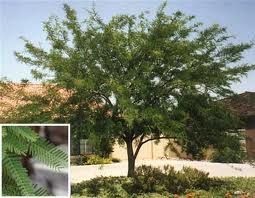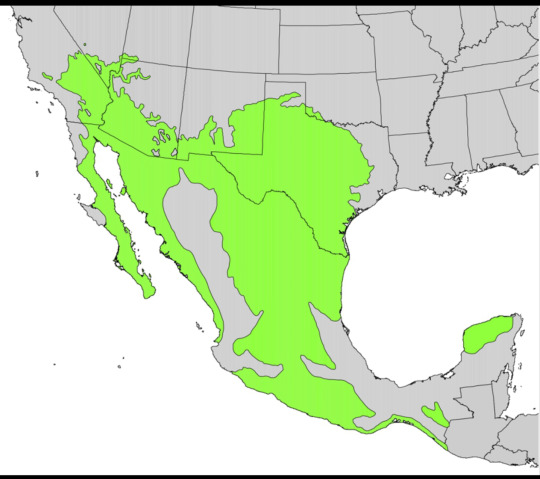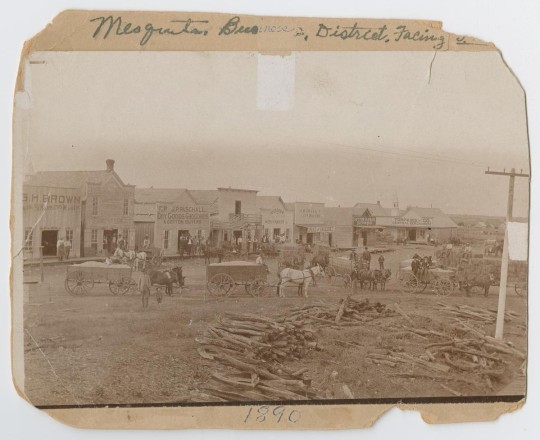#source: j. frank dobie
Explore tagged Tumblr posts
Text
In the Loonivoisity I am a wild hare; in the wilds I am a scholar and a poet
Bugs to Buster Bunny
1 note
·
View note
Text


Band of Brothers Birthdays
January
1 John S. Zielinski Jr. (b. 1925)
21 Richard D. “Dick” Winters (b. 1918)
26 Herbert M. Sobel (b. 1912)
30 Clifford Carwood "Lip" Lipton (b. 1920)
31 Warren H. “Skip” Muck (b. 1922) & Robert B. Brewer (b. 1924)
February
8 Clarence R. Hester (b. 1916)
18 Thomas A. Peacock (b. 1920)
23 Lester A. “Les” Hashey (b. 1925)
March
1 Charles E. “Chuck” Grant (b. 1922)
2 Colonel Robert L. “Bob” Strayer (b. 1910)
4 Wayne “Skinny” Sisk (b. 1922)
10 Frank J. Perconte (b. 1917)
13 Darrell C. “Shifty” Powers (b. 1923)
14 Joseph J. “Joe” Toye (b. 1919)
24 John D. “Cowboy” Halls (b. 1922)
26 George Lavenson (b. 1917) & George H. Smith Jr. (1922)
27 Gerald J. Loraine (b. 1913)
April
3 Colonel Robert F. “Bob” Sink (b. 1905) & Patrick S. “Patty” O’Keefe (b. 1926)
5 John T. “Johnny” Julian (b. 1924)
10 Renée B. E. Lemaire (b. 1914)
11 James W. Miller (b. 1924)
15 Walter S. “Smokey” Gordon Jr. (b. 1920)
20 Ronald C. “Sparky” Speirs (b. 1920)
23 Alton M. More (b. 1920)
27 Earl E. “One Lung” McClung (b. 1923) & Henry S. “Hank” Jones Jr. (b. 1924)
28 William J. “Wild Bill” Guarnere (b. 1923)
May
12 John W. “Johnny” Martin (b. 1922)
16 Edward J. “Babe” Heffron (b. 1923)
17 Joseph D. “Joe” Liebgott (b. 1915)
19 Norman S. Dike Jr. (b. 1918) & Cleveland O. Petty (b. 1924)
25 Albert L. "Al" Mampre (b. 1922)
June
2 David K. "Web" Webster (b. 1922)
6 Augusta M. Chiwy ("Anna") (b. 1921)
13 Edward D. Shames (b. 1922)
17 George Luz (b. 1921)
18 Roy W. Cobb (b. 1914)
23 Frederick T. “Moose” Heyliger (b. 1916)
25 Albert Blithe (b. 1923)
28 Donald B. "Hoob" Hoobler (b. 1922)
July
2 Gen. Anthony C. "Nuts" McAuliffe (b. 1898)
7 Francis J. “Frank” Mellet (b. 1920)
8 Thomas Meehan III (b. 1921)
9 John A. Janovec (b. 1925)
10 Robert E. “Popeye” Wynn (b. 1921)
16 William S. Evans (b. 1910)
20 James H. “Moe” Alley Jr. (b. 1922)
23 Burton P. “Pat” Christenson (b. 1922)
29 Eugene E. Jackson (b. 1922)
31 Donald G. "Don" Malarkey (b. 1921)
August
3 Edward J. “Ed” Tipper (b. 1921)
10 Allen E. Vest (b. 1924)
15 Kenneth J. Webb (b. 1920)
18 Jack E. Foley (b. 1922)
26 Floyd M. “Tab” Talbert (b. 1923) & General Maxwell D. Taylor (b. 1901)
29 Joseph A. Lesniewski (b. 1920)
31 Alex M. Penkala Jr. (b. 1924)
September
3 William H. Dukeman Jr. (b. 1921)
11 Harold D. Webb (b. 1925)
12 Major Oliver M. Horton (b. 1912)
27 Harry F. Welsh (b. 1918)
30 Lewis “Nix” Nixon III (b. 1918)
October
5 Joseph “Joe” Ramirez (b. 1921) & Ralph F. “Doc” Spina (b. 1919) & Terrence C. "Salty" Harris (b. 1920)
6 Leo D. Boyle (b. 1913)
10 William F. “Bill” Kiehn (b. 1921)
15 Antonio C. “Tony” Garcia (b. 1924)
17 Eugene G. "Doc" Roe (b. 1922)
21 Lt. Cl. David T. Dobie (b. 1912)
28 Herbert J. Suerth Jr. (b. 1924)
31 Robert "Bob" van Klinken (b. 1919)
November
11 Myron N. “Mike” Ranney (b. 1922)
20 Denver “Bull” Randleman (b. 1920)
December
12 John “Jack” McGrath (b. 1919)
31 Lynn D. “Buck” Compton (b. 1921)
Unknown Date
Joseph P. Domingus
Richard J. Hughes (b. 1925)
Maj. Louis Kent
Father John Mahoney
George C. Rice
SOURCES
Military History Fandom Wiki
Band of Brothers Fandom Wiki
Traces of War
Find a Grave
#this is going off who was on on the show#i double checked the dates and such but if you notice any mistakes please let me know :)#band of brothers#easy company#hbo war#not gonna tag everyone lol#mine: misc#yep it's actually Halls and not Hall#i've seen Terrence Harris's name spelled with as Terence but wenand t with two Rs s#since that's how it's spelled on photos of memorials and on his gravestone#I’ll do the pacific next! should be significantly shorter since there’s far fewer characters 😅
212 notes
·
View notes
Text
Mesquite: The Tree of Life of the South West

"I could ask for no better monument over my grave than a good mesquite tree, its roots down deep like those of peace who belong to the soil, its hardy branches, leaves, and fruit holding memories of the soil..." J. Frank Dobie, Texas Writer
Overview
The name mesquite derives from the Hispansized word 'mizquitl'.
There are more than 40 species of mesquite trees found worldwide, at least 90 percent of which grow in Latin America, principally Argentina and Chile. Although mesquite also thrives in other arid regions such as those in Southwest North America, Africa, the Middle East, Tunisia, Algeria, India, Pakistan, Afghanistan, Burma, Hawaii, West Indies, Russia, Puerto Rico, and Australia.
The tree itself comes in a variety of sizes depending on rain fall. Locations with higher rain fall note mesquite trees ranging from 40-50ft in height with a spread of nearly 40 feet or more. The branches are sparsely covered in thin feathery leaves with 2inch thorns growing at the base of the leaf joints.
This blog will mostly focus on Latin America; specifically in the Southwest Us and Texas.
There are seven varieties that cover one-third of the state of Texas or 56 million of the 167.5 million acres of land from the Rio Grande to the Panhandle, across central and north Texas and into much of west texas. Of all the US states 76 percent of mesquite wood grows in Texas. Mesquite grows in all regions of the state except the deep East Piney Woods.
Out of the seven varieties, the post will mostly reference Prosopis glandulosa var. glandulosa a.k.a "Honey Mesquite".

Map of the American South West and Latin america showing the range of Mesquite tree growth.
Native Tribes: Resource and Myth

Description reads: Salt River Reservation, Pima Agency Arizona, two Maricopa men(sitting) and Mojave Man in full aboriginal dress. 1880
Mesquite was such an omnipresent and nutritious resource and a central part of life itself that many tribes such as the Walapai, Apache, Papago, and Maricopa honored mesquite within their language and mythology.
Mesquite beans were the food staples for many of the South West Native American tribes. Through out the United states they gathered millions of pounds annually. In cases of food shortages, mesquite beans were often the only food source.
Much of the plant material such as fiber, thorns, sap, and roots were used in the making of many goods. The fibers were used for making of textiles and baskets. The
The creation myth of the Maricopa states that the Maricopa, Pima, and Yavapai -after death of their maker- scattered over the land and gathered mesquite beans. An Apache myth recounts how the sun and moon consulted with one another and formed the mesquite tree then hung beans upon its branches. The death of the Coyote myth of the Pima tells of Mesquite surviving the Great Flood and of how the coyote ate so many beans that they swelled in his stomach.
The Mesquite was an extremely important resource and was used frequently as an amenity of trade between the Apache tribe and the Pima tribe. When food plants failed during time of drought the Pima would travel long expeditions to trade goods with the Apache for beans and bean flour. With it, the Pima made dough and cooked it as round cakes. Certain tribes such as Pima and Opata also fermented bean flour water creating a bean beer called Atole and has a mildly intoxicating quality.
The gum, or sap, of the tree was used as adhesive to mend broken pottery as well as dye clay before the heating process. The gum when mixed with mud was used in several tribes spiritual and courtship rituals.
Both leaves and gum of the Mesquite is known by the tribes to carry healing powers and medicinal properties.
The Yaqui community in particular honor mesquite as one of two plants to have supernatural powers beyond most other plants. However of the two, only Mesquite grows in the sacred territory of the Yaqui and is said to have powers to detect and vanquish witchcraft especially if the wood is cut into a shape of a cross. One Yaqui myth tells of a "talking stick" made from mesquite wood which foretold death to all people baptized as christian.
Anglo-Texan History

Image of Mesquite Texas, 1890 showing piles of mesquite branches and horse drawn wagons containing grain or beans.
Historians believed that the mesquite was orginally limited to extreme South Texas and spread north only after the Civil War when cattle drives became frequent. Cattle would eat mesquite beans when grass was not plentiful.
Early Texas settlers facored the mesquite wood because not only was it plentiful but it also resisted rotting. Before commercial barbed wire came to texas in the 1870s, ranchers built sturdy corrals from mesquite-log picket fences. Travelers also fashioned hubs for wagons, wagon spokes, and small boat ribs from mesquite.
During the civil war, when coffee was scarce, Texans made ersatz coffee from roasted and ground mesquite beans. Honey made from mesquite flowers was especially prized. In the absence of pins, settlers substituted mesquite thorns.
In the 1869 Dr. John E. Park of Sequin patented under the no. 51,407 on December 5 for the use of mesquite bark in tanning leather. In the article from 1870 Texas Almanac, he included information on the superiority of the use of Mesquite in tanning leather. For, mesquite was found to be richest in Tannic Acid (a substance used for tanning) and worked exceptionally faster than previous methods because the acid penetrated the hide faster. Fast enough to seldom lose hide to decomposition. This allowed for tanning to be done in summer months, a process usually done in winter.
Medicinal Uses
*Note: not a replacement for modern day regulated medications and treatments.*
Aztecs made a lotion from ground mesquite leaves to treat sore eyes.
The Yuma tribe treated venereal diseases with an infusion of leaves and sap.
Comanches chewed on leaves to relieve toothaches.
The Yaqui Tribe treated headaches with a poultice made from mashing leaves to a pulp, mixing with water, and binding the mixture to the forehead.
The light-amber gum or sap that oozed from mesauite bark was mixed with water and gargled to treat sore throats, or swallowed to treat diarrhea, aid in digestion, and help wounds heal.
The Yavapai rubbed a mixture of mud and mesquite gum into their hair to simultaneously dye it and treat lice.
Modern Uses
Although ranchers still try to annihilate mesquite due to injury of livestock and cowhands, a dedicated group of texans cant get enough of it. They are mostly artisans who value mesquite for its beauty, the ease with which it can be worked, and the high sheen of finished pieces. Some even prize its irregularities.
Mesquite has a swirling grain, radial cracks, mineral deposits in the bark, and often many insect holes. Mesquite is dimensionally stable: as most hardwoods dry they shrink more in one direction than they do the other while mesquite shrinks the same percentage in both directions. It has a surface hardness of 2,336 pounds per squared inch, equal to that of hickory and almost twice that of oak and maple; and a density of 45 pounds per foot greater than oak, maple, pecan, and hickory.
Modern Spiritual interpertations:
Harmonizing qualities
Accessing the willingness to cross the wasteland of "dark night of the soul" to find deep spiritual richness within yourself and others
Comfortably connecting with others from a place of compassion and warmth
Standing inside a circle of love
Self blessing
Forgiveness
Possible use for Mesquite in imbalances
Emotional remoteness
Aloofness
Allowing others to see a coolness that actually covers an inner warmth
Feeling as is there is a barren wasteland or spiritual desolation within self.
Feeling separated and remote from others or self.
Personal Suggestion on craft Use*
*Disclaimer: subject to error and not a replacement for actual medications; allergy notice: mesquite is part of the legume family. Research trees and plants in area before ingesting random plants. Watch out for use of pesticides in public places. I do Not recommend diy fermentation. I do not support appropriating native tribes' traditions and rites unless explicitly permitted to by said tribe, do NOT trespass on Sacred Lands for resources it may be possible to purchase sacred mesquite from the tribes. Do Not vandalize sacred grounds or public trees. BE RESPECTFUL.*
Mesquite is tasty. Use wood for rich Smokey flavor on barbequed meats and vegtables.
Make tea from leaves
The beans are said to taste sweet and contain 30 percent sugar trace. Eat beans raw, roasted, dried, or ground into a flour.
Use water diluted sap to treat rashes. (Unless allergic.)
Use diluted sap in hair as you would oils.
Burn leaves and wood to smoke cleanse.
Hang mesquite cross to avert hexes or harmful craft.
I recommend buying from South Western Tribes and other mesquite artisans for bobbles and other wooden figures. Otherwise, source your mesquite in an earth friendly manner by sustainable means and only take what you need.
Information Sources:
"The Magnificent Mesquite" book by Ken E. Rogers
Texasalmanac.com
Desert-alchemy.com
Local Texans
Picture Sources: Google and pinterest
#mesquite#witchcraft#witchy#witch#witches#greenwitch#green craft#green magick#green witch#mesquite tree#native american#tribes#southwest#south west united states#texas#wood crafts#wood magic#wood carving#woodworking#mesquite history#history#leather#leather working#cooking#educational#desert witch#desert craft#desert#trees#almanac
165 notes
·
View notes
Text
Folklore, traditional environmental knowledge, and ecological revolution in early-twentieth century Rio Grande Valley:

Jovita Gonzalez documents the early-twentieth-century ecological revolution of South Texas from a Mexican American perspective. “Ecological revolutions,” as defined by environmental historian Carolyn Merchant, “are major transformations in human relations with nonhuman nature. They arise from changes, tension, and contradictions that develop between society’s mode of production and its ecology. [...] these dynamics in turn support the acceptance of new forms of consciousness and worldviews.” Some of Gonzalez’s stories and novels respond to the ecological revolution of her homeland by seeking to preserve a way of life and the environmental knowledge that accompanied it, which she saw dying out. Especially significant in this regard are her first published stories -- folktales collected in the 1927 edition of the Publications of the Texas Folklore Society, Texas and Southwestern Lore, edited by J. Frank Dobie.
These stories each contain an explanation of a plant or animal trait, such as the dove’s coo, the Texas sage’s ashy color, the mockingbird’s white wing feathers, the thornless thistle, and the guadalupana vine’s medicinal value, yet they also challenged readers to see the social critiques hidden in their messages of traditional environmental knowledge. They represent a hitherto-unrecognized source of environmental writing. [...]
Although at first glance these tales may seem simple and lighthearted, they prove to be intricately disguised critiques of the large-scale cultural and agricultural changes Gonzalez and her family witness. The changes [...] were caused by three related and powerful forces: the growing American influence in the area after the US-Mexican War, the 1904 arrival of the railroad, and the resulting shift in the region from ranching to farming. As a South Texas native, Gonzalez documents the transformation of the greater Rio Grande Valley in the late-nineteenth and early-twentieth century, paying close attention to how these changes affect human relationships with the natural environment. The shift she witnessed meant more than a change in land use: it was a power shift that moved her community from a culture of land-owning Mexican American ranchers to a group of landless laborers. [...]
Gonzalez’s introduction establishes from the outset two themes that she sustains in the tales: cultural hybridity and environmental awareness.
-
Priscilla Solis Ybarra. “Borderlands as Bioregion.” 2009.
18 notes
·
View notes
Quote
Putting on the spectacles of science in expectation of finding an answer to everything looked at signifies inner blindness.
Wile E. Coyote
1 note
·
View note